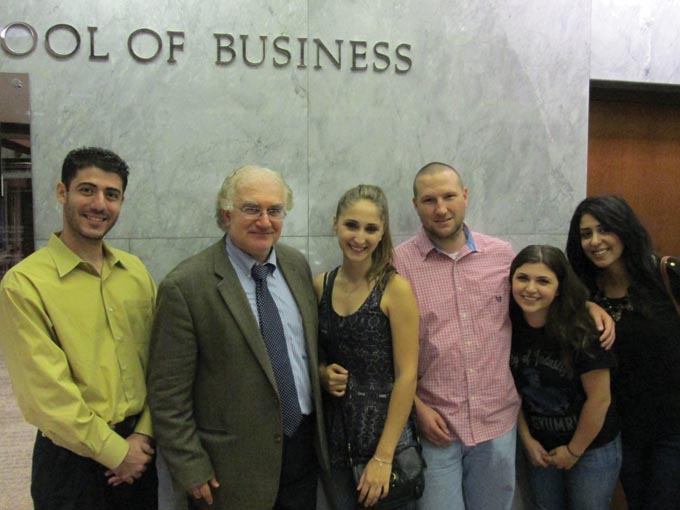Marina Chardukian
Staff Writer

Dr. Simon Payaslian, holder of the Charles K. and Elizabeth M. Kenosian Chair of the Modern Armenian History and Literature at Boston University, spoke to a full auditorium of Fresno State students and the community on Friday, September 12 as part of the Fall Lecture Series of the Armenian Studies Program.
Dr. Payaslian spoke on “The Origins of the Armenian Community in New England and Construction of Armenian-American ‘Cultural Congruence,’” where he discussed how conflicting views of Armenian identity developed in the Armenian-American community of New England.
Dr. Payaslian began his talk by speaking about the earliest documented history of Armenian immigration to America. The focus of the lecture was mainly on Armenians who immigrated to the New England region from the 1880s to the 1920s.
As each wave of immigrants arrived, the established Armenians became more assimilated in the American society. However, for many, the preservation of their roots was an important priority.
Dr. Payaslian specifically discussed two newspapers published in the New England area, the Armenian-language newspaper Hayk and the English-language journal Armenia, contrasting their editorial approach as an indication of the varying opinions in the community.
Hayk, published in Armenian, strived to preserve the Armenian culture. “The early Armenian immigrants to the New World stressed the imperatives of hayapahpanum (preservation of Armenianness) or azgapahpanum (preservation of the nation) against otaratsum (foreignization),” said Dr. Payaslian.
Hayk presented Armenia as the repository of traditional moral and ethical values. “Such an image of Armenia and the Armenian became all the more essential given the hostility the Armenian communities experienced from ordinary Americans,” asserted Dr. Payaslian.
Armenia, on the other hand, was a journal published in English, and focused on cultural congruence, or the idea that Armenians should seek to accommodate themselves to American culture as quickly as possible. Armenia was published by the Verakazmial (Reformed) Hnchakian Party in Boston from 1904-1913. The intellectuals who contributed to Armenia, strove to create a favorable impression of Armenia and the Armenian on their American hosts as a way of counterbalancing the prejudicial treatment they often received from the local communities.
Dr. Payslian stated that some immigrants wanted to make themselves more acceptable to the American public, and therefore conservative Armenian elites stressed the Christian roots of the immigrant community and extolled the virtues of the Armenian character.
Armenia became an important journal representing the best and brightest among Armenian intellectuals in the United States, and became, albeit briefly, one of the most respected journals in American political and intellectual circles.
Dr. Payaslian’s research presented interesting findings that could also be applied to Armenian Diaspora communities, such as that of Fresno and the San Joaquin Valley.
 Hye Sharzhoom Armenian Action
Hye Sharzhoom Armenian Action